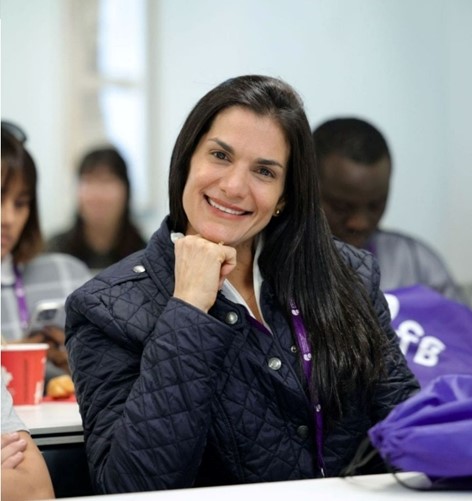Program
What can you learn from Full Stack Web Development?
We have all marveled at the user interface of web applications and their ability to present content according to our preferences.
We have all marveled at the user interface of web applications and their ability to present content according to our preferences. For example, consider commonly used applications like Instagram and LinkedIn. Every time we refresh the page, new content is loaded and presented to us. Similarly, shopping apps such as Amazon and Flipkart provide settings to sort items as per our preferences.
All this can be summarized under the umbrella term full stack web development, which comprises front-end and back-end web development. A full-stack web developer knows how to program and develop the client side and server side of an application. With the world’s increasing dependence on website applications, the scope of full-stack web development has also widened. This was seen in a 2022 Stack Overflow Developer Survey where 47% of participants were full-stack developers, So, what is full-stack development and how can you pursue a career in this field?
What is Full-Stack Web Development?

Full-stack web development refers to the whole framework and technology that makes up a website. The processes involved are front-end and back-end web development. As a full-stack developer, you must handle the client and server side of the application and manage its databases.
Front-end development refers to the user interface of the web application, such as how it is presented in browsers and mobile devices. This is the client side of the web application where information is presented to the user in an appealing way. Programming languages such as HTML, CSS, and JavaScript are used to create a platform of interaction for users which provides and collects necessary information.
Full-stack web development refers to the whole framework and technology that makes up a website. The processes involved are front-end and back-end web development. As a full-stack developer, you must handle the client and server side of the application and manage its databases.
Front-end development refers to the user interface of the web application, such as how it is presented in browsers and mobile devices. This is the client side of the web application where information is presented to the user in an appealing way. Programming languages such as HTML, CSS, and JavaScript are used to create a platform of interaction for users which provides and collects necessary information.
What are the responsibilities of a Full-Stack Developer?
The responsibilities of a full-stack web developer depend on the industry they are employed in. However, below are the general functions and responsibilities performed by a full-stack developer.
You must also stay updated with the latest technologies and programming languages to improve customer experience.
How to become a Full-Stack Web Developer

The information found on search engines about becoming a full-stack web developer can be overwhelming. However, with the right preparation and skills, becoming a full-stack developer is easier than you think.
Studying programming and coding languages is necessary for front and back-end development. HTML, CSS, JavaScript, Python, PHP, Ruby and SQL are some of the popular and commonly used languages among full-stack developers.
You must also develop an understanding of web and data architecture to have a seamless experience while working on developing applications. Database management skills and knowledge of relational databases like Oracle, Redis and SQL Server are imperative to a full-stack web developer.
Knowledge of user interface and user experience design also goes a long way in helping create attractive web interfaces for users. Once you create applications, maintaining them without bugs is also one of your responsibilities.
Mastering certain soft skills such as problem-solving, analytical reasoning, communication, creativity, and designing can also help in the process of developing web applications.
These simple steps can make your journey to becoming a full-stack developer smooth and stress-free. A full-stack web developer is one of the most in-demand job roles in the tech sector with career growth and lucrative salaries making it the right time to study and gain experience in full-stack web development.
Are you interested in the prospect of becoming a full-stack web developer? Enroll in the Full-Stack Web Development with Co-op program at the Canadian College of Technology and Business to learn how to create and maintain web applications and become a skilled full-stack web developer.
The program covers basic and advanced knowledge about all the aspects of designing web applications and helps you build a strong foundation in software development. You will learn popular programming languages and relational databases to emerge as a full-stack web developer prepared to address the challenges of the tech industry.
Click here for more details.

More News & Blogs
We acknowledge that the territories on which CCTB and its campus are situated are the traditional, ancestral and unceded territories of the xʷməθkʷəy̓əm (Musqueam), Sḵwx̱wú7mesh (Squamish) and Sel̓íl̓witulh (Tsleil-Waututh) Nations. We thank them for having cared for this land since time immemorial, honour their graciousness to the students who seek knowledge here, and iterate our dedication to valuing the ongoing contributions of Indigenous peoples and communities.